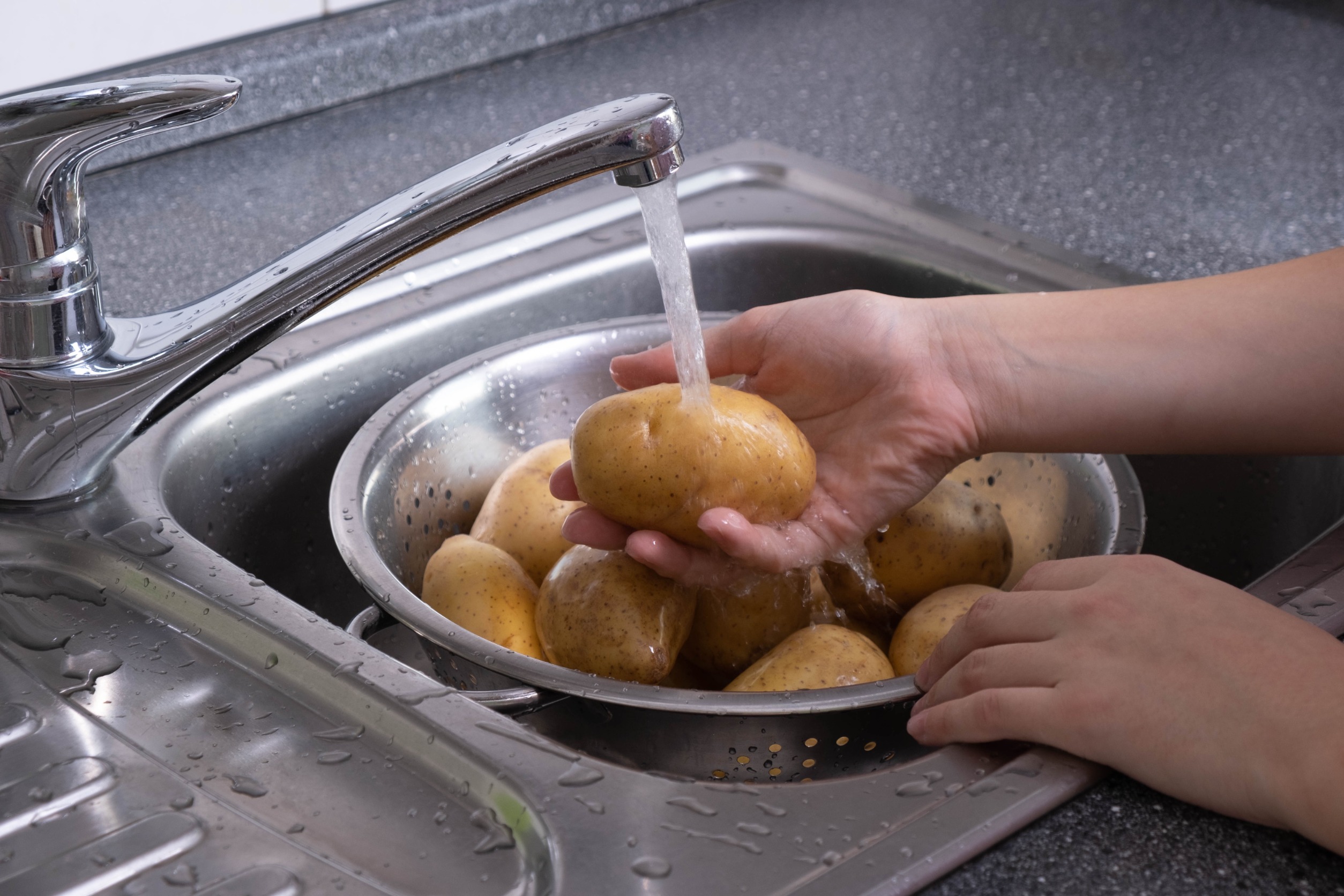Potatoes are a staple ingredient in many kitchens, thanks to their versatility and delicious taste. Whether mashed, roasted, or boiled, they can add texture and flavor to a wide variety of recipes. However, when it comes to preparing potatoes, many people are curious about what does soaking potatoes in water do.
The science behind it is simple. Soaking potatoes in water removes the excess starch that would otherwise be released when they’re cut or grated. This essential step of removing the starch prevents your potatoes from sticking together, resulting in a fluffier, more evenly cooked dish for you to enjoy.
In this article, we will explore the science behind soaking potatoes in water and its effects on the texture, flavor, and nutritional value of potatoes. Whether you are a hardcore potato fan or just someone who enjoys cooking with this versatile ingredient, understanding the benefits of soaking potatoes in water can help take your culinary skills to the next level.
How to Soak Potatoes in Water
Soaking potatoes in water is a simple process, but it requires a bit of preparation to ensure the best results. Below are the steps that you should follow when you will be using potatoes to make a dish:
Choose the right type of potato
When it comes to choosing the right type of potato for soaking, it’s important to keep in mind that there are different types of potatoes available on the market.
Starchy potatoes like russets or Yukon golds are considered the best for soaking because they contain more starch than waxy potatoes. Because they are full of starch, they tend to be more fluffy and absorbent than their counterparts, making them perfect for mashed potatoes or French fries.
On the other hand, waxy potatoes like red or fingerling potatoes are naturally low in starch, which is why they don’t need to be soaked before cooking. These types of potatoes are great for dishes that need to hold their shape after cooking, such as potato salad or roasted potatoes.
Clean the potatoes thoroughly.

Because potatoes grow underground, they usually get dirt brushed or washed away from their skin before they get sold in the market. But even then, there could still be hints of dirt and debris left. So scrubbing them under running water before cooking or peeling them is ideal and more hygienic.
Cut the potatoes into the desired shape.
Whether you are cutting the potatoes into chunks, slices, or shredded pieces, it is essential to cut them to roughly the same size to ensure that they will cook evenly.
Soak the potatoes
The next thing that you should do is, of course, place the cut potatoes in a large bowl or pot and cover them with cold water. Depending on your desired texture for the dish, you can generally soak them for 30 minutes up to 2 hours, based on the recipe.
Just remember that the longer you soak them, the higher the chance that bacteria will grow on them. So if you are soaking the potatoes for longer than 2 hours, you should place the container inside the refrigerator. Doing that will allow you to remove more starch from the potatoes while saving yourself a trip to the doctor due to food poisoning.
What to Do When Something Goes Wrong
While soaking potatoes in water is generally a straightforward process, there are a few issues that can arise. In this section, we’ll cover some common problems you may encounter while soaking them and tips to make the hole process as smooth as possible.
Potatoes turn brown while soaking.
Prolonged exposure to air will turn your potatoes brown while soaking. Fortunately, adding a little vinegar or lemon juice to the water before soaking will fix this issue without any complications.
This works because the acid in those common kitchen ingredients limits the oxidation process that normally occurs in potatoes, keeping them looking fresh.
Potatoes remain hard after soaking.
If your potatoes remain hard after soaking, then the reason could be one of two things. The most obvious one is that your spuds weren’t soaked long enough, but it could also mean that you are using the wrong type of potato for soaking. Both of which can be solved with a few minutes of boiling until the potatoes are tender enough for your needs.
Potatoes turn mushy after soaking.
If your potatoes turn mushy after soaking, then you have most likely over-soaked your spuds. To prevent this from happening, put a timer on your phone to make sure that your potatoes aren’t soaked for too long. But if they are already mushy, you can consider lightly dusting them with flour to add some starch back before cooking.
Things to Remember When Soaking Potatoes in Water
- Use a large bowl or pot to ensure that the potatoes are completely submerged in water.
- Change the water every 30 minutes to remove excess starch and keep the water fresh.
- Dry the potatoes thoroughly before cooking to prevent excess moisture, which can affect the texture of the final dish.
- If you are adding salt to the recipe, do not add it to the soaking water, as it can toughen the potatoes.
- Keep in mind that some types of starchy potatoes have thicker skins, which means that they require longer soaking times to fully remove the excess starch.
- When choosing a potato for soaking, it’s best to choose one with thinner skin and higher starch content for the best results.
